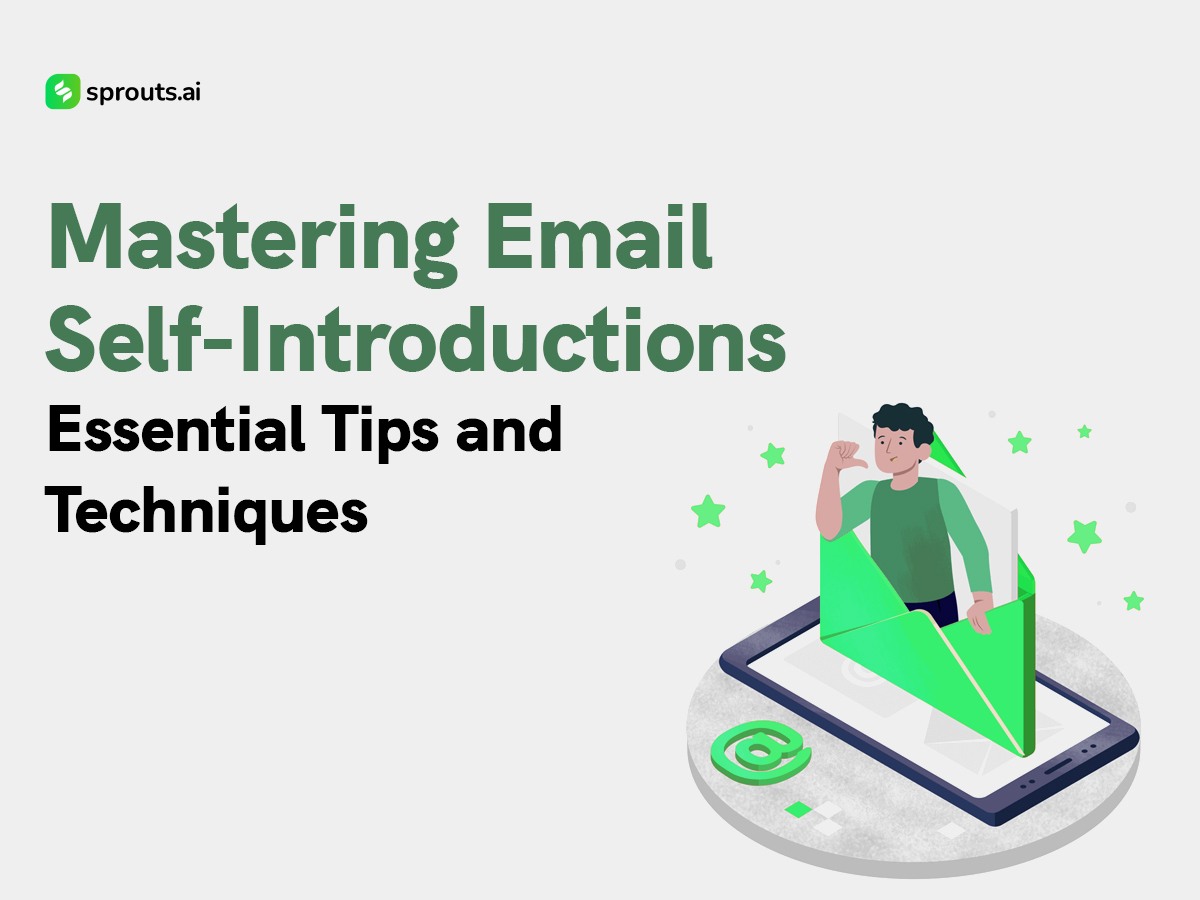Have you ever missed out on a dream opportunity because your introductory email failed to capture the recipient’s attention? Crafting impactful email introductions is a critical skill for professional success. The ability to introduce yourself effectively via email can unlock a world of possibilities. This blog will equip you with essential tips and techniques to master the art of email self-introductions, empowering you to forge meaningful connections and propel your career forward.
- Start with a Strong Subject Line: The subject line is your email’s first impression, akin to a headline. It should be concise yet attention-grabbing, providing a glimpse into the purpose of your email. Utilize keywords relevant to your message to increase the likelihood of it being opened. For instance, “Introduction from [Your Name] – Mutual Interest in [Topic/Project]” succinctly communicates your intention and establishes a connection from the outset.
- Personalize the Salutation: Addressing the recipient by name adds a personal touch and demonstrates that you’ve taken the time to research and acknowledge them. If you’re unfamiliar with the recipient’s name or title, consider alternative greetings like “Hello” or “Good [morning/afternoon/evening]” to maintain a polite and professional tone while avoiding potential missteps.
- Provide Context: In the opening paragraph, set the stage by providing context for your email. Briefly introduce yourself, including your name and relevant affiliations or experiences. Clearly articulate the reason for your communication, whether it’s expressing interest in a job opportunity, seeking collaboration, or simply introducing yourself in a professional context. This initial clarity lays the foundation for effective communication.
- Highlight Mutual Connections or Interests: If you share any mutual connections or interests with the recipient, subtly mention them to establish common ground. Briefly acknowledging these shared aspects can help foster a sense of rapport and familiarity, making your introduction more relatable. But ensure your references are genuine and relevant to avoid coming across as insincere or opportunistic.
- Showcase Your Value Proposition: Use the body of your email to succinctly showcase your value proposition. Highlight your unique skills, experiences, or qualifications that are relevant to the recipient’s interests or needs. Articulate how your background aligns with their objectives or challenges, emphasizing the potential benefits of further engagement. By clearly communicating the value you offer, you increase the likelihood of a positive response.
- Keep it Concise: Respect the recipient’s time by keeping your email concise and focused. Avoid unnecessary details or lengthy explanations that may overwhelm or distract from your main message. Use short paragraphs and bullet points to convey information efficiently, making it easier for the recipient to grasp key points at a glance. Remember, brevity is key to maintaining engagement and clarity in your communication.
- End with a Call to Action: Close your email with a clear and actionable request that encourages the recipient to respond or take the next step. Whether it’s scheduling a meeting, arranging a call, or providing additional information, make it easy for them to engage with you. Express gratitude for their time and consideration, and convey your eagerness to further the conversation or collaboration. A well-defined call to action helps guide the recipient towards the desired outcome and facilitates productive communication.
- Proofread and Edit: Before sending your email, take the time to proofread and edit it carefully. Typos or grammatical errors can detract from your professionalism and undermine the effectiveness of your message. Consider using spelling and grammar-checking tools, and read your email aloud to catch any awkward phrasing or inconsistencies. Ensure that your tone remains polite and respectful throughout, as it contributes to the overall impression you convey.
- Follow-Up: In the event of a non-response, don’t hesitate to follow up politely after a reasonable period. While it’s possible that your email was overlooked or buried in a busy inbox, a gentle reminder can prompt a response. Keep your follow-up concise and courteous, reiterating your interest in further communication and offering to provide any additional information if needed. Persistence and proactive communication demonstrate your professionalism and commitment to building meaningful connections.
- Build and Maintain Relationships: Recognize that email introductions are just the beginning of potential relationships. Invest time and effort into nurturing these connections over time, whether through periodic follow-ups, sharing relevant insights, or offering assistance when possible. Building genuine relationships based on mutual trust and respect lays the groundwork for future collaborations and opportunities. Stay proactive in your networking efforts and strive to add value to your connections wherever possible, fostering a robust professional network that can support your goals and aspirations.
Mastering email introductions is an investment in your professional future. A well-crafted email introduction can be the catalyst that unlocks doors to exciting opportunities and propels you towards your career goals. So, put these strategies into practice, refine your communication approach, and take charge of your professional journey through the power of effective email self-introductions.

